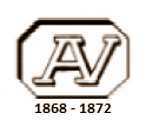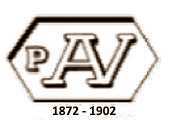MARKS AND HALLMARKS OF AUSTRIA AND AUSTRIA-HUNGARY - 1737 - 1921 - |
|
|
created by Giorgio B. owner of www.silvercollection.it © 
|
This is a page of A Small Collection of Antique Silver and Objects of vertu, a 1500 pages richly illustrated website offering all you need to know about antique silver, sterling silver, silverplate, sheffield plate, electroplate silver, silverware, flatware, tea services and tea complements, marks hallmarks, silver marking system and silver hallmarks guide, articles, books, auction catalogs, famous silversmiths (Tiffany, Gorham, Jensen, Elkington, WMF, Reed & Barton, Mappin & Webb, Bateman Family), history, oddities ... |
|
Habsburg Monarchy or Habsburg Empire is a term coined by historians to denote the numerous lands and kingdoms of the Habsburg dynasty, especially those of the Austrian line. The Habsburg monarchy was thus a union of crowns, with no single constitution or shared institutions other than the Habsburg court itself, with territories inside and outside the Holy Roman Empire that were united only in the person of the monarch. The unification of the Habsburg monarchy took place in the early 19th century. The Habsburg Monarchy was formally unified from 1804 to 1867 as the Austrian Empire and from 1867 to 1918 as the Austro-Hungarian Empire. SILVER HALLMARKS BEFORE 1807 (HABSBURG EMPIRE) VIENNA HALLMARKS
The first officially known Viennese hallmark dates to 1524, which, apart from a few alterations, was used up to the 18th century County mint offices were established in 1696 to supervise the fineness of gold and silver manufactures. New hallmarks with the "Habsburg coat-of arms" were introduced in 1696 and maintained until 1737 Silver fineness was indicated in "loth" (until 1867): 12 loth = 750/1000 13 loth = 812/1000 14 loth = 875/1000 15 loth = 937/1000. A figural or alphabetic symbol (in some cases accompanied by a number) identified the town control office. In 1737 the "Habsburg coat-of arms" was replaced by the "Viennese cross-shield" with date and silver fineness (in loth)
REPUBLIC OF AUSTRIA MARKS FROM 1922 UNTIL PRESENTHUNGARY MARKS FROM 1866 UNTIL PRESENT
|

 |
SILBERWARENFABRIK ALEXANDER STURM, Vienna Alexander Sturm was born 1851 in Vienna and received the business license as silverware producer in 1882. One year later he opened his own shop. After initial difficulties he finally succeeded to sell his products with the help of the so called nouveau riche Vienna society. In particular the families of the new bourgeoisie (Manner, Seligmann, Wittgenstein etc.) were customers of Alexander Sturm. From 1926 also artist of the Wiener Werkstätte worked for the company, which had its own design studio, where the artist created their designs for the silver manufacture. After the war Adalbert Sturm revived the plant and design drawings by Otto Prutscher and Josef Hoffmann entered in the inventory of the factory. In early 2000s Christa Berghaus Fölster (1950-2013) saved and continued the business. She bought machines, tools and blankings as well as the comprehensive company archive, to preserve and revive the old Viennese silversmith tradition. |


 |
SCHEID GEORG ADAM, Vienna Scheid completed a commercial apprenticeship until 1853 and subsequently worked in Pforzheim and Stuttgart. In 1858 he went to Vienna and worked there in the workshop of his future father-in-law, the silverware producer and jeweler Michael Markowitsch. Together they founded the OHG Markowitsch & Scheid in 1862. 20 years later, he left the thriving company and founded in 1882 under his name a jewelry factory and 1884 also the Georg Adam Scheid'sche Affinerie, from which later the Ögussa emerged. In 1911 he retired. His jewelery works bear the marks "G.A.S. " or "S.G.A. " and often the German hallmark "Crescent and Crown"  |

 |
FRANK RUDOLF active 1882-1914 |

 |
ARGENTOR WERKE RUST & HETZEL |


 |
DIETRICH OSCAR JULIUS (b.1853- d.1940), active in Vienna, 1881-1924. Partecipated in the Exhibition in Paris in 1900 and 1925. Executed designs by Franz Delavilla, Emanuel Josef Margold, Dagobert Peche and the architects Hans Bolek and A.O. Holub. The workshop closed in 1931 |


 |
DUB VINCENT CARL active Vienna, 1886-1924 (b. 1852 - d. 1924) |


 |
KLINKOSCH JOSEPH CARL (1822-1888) was the son of the silversmith Carl Klinkosch and apprenticed at his father workshop. He became a certified silversmith in 1844 and took over his father business in 1851. In 1864, Klinkosch formed a partnership with Stephan Mayerhofer trading as Mayerhofer & Klinkosch. The firm participated to the Viennese World Exhibition of 1873 and the Parisian Exposition Universelle in 1878. In 1869/1870, Klinkosch ended his partnership with Mayerhofer and continued to run the company alone, renaming it J. C. Klinkosch. From 1855 Klinkosch held the Imperial Warrant to the Court of Emperor Franz Josef of Austria. Klinkosch retired in 1884 and the company passed to his two sons, Arthur and Isidor. In 1918, the company was acquired by Arthur Krupp and was incorporated under the name J.C. Klinkosch AG. The company was deleted from the Commercial Register in 1972. |


 |
FRIEDMAN EDUARDactive Vienna, 1881-1919.
Executed designs by Rudolf Karger, Milla Weltmann, and by the architects Hans Bolek, Philippe Hauser, Emanuel Josef Margold and Otto Prutscher. |

 |
KALMAN POLGARactive in Budapest |





 |
RATZERDORFER HERMANNactive Vienna, 1843-1881.Hermann Ratzersdorfer was born in 1817 and raised in Pressburg, Austria (Bratislava now, the capital of Slovakia).
His father Salomon was a dealer in true antiquities and Hermann moved at the beginning of the forties
to Vienna. Soon found it more lucrative to imitate rare pieces, instead of searching out and carefully
picking originals, and he established such a factory, the first of its kind in Austria.
On December 14, 1843 he started his business and registered his own maker’s mark certifying his recognition
as a master silversmith.Two years later he showed his workmanship at the Viennese Trade Exhibition,1845.
He exhibited also at the London Exhibition of 1851, the Paris Exhibition of 1855 (where he won a 2nd class medal),
the London Exhibition of 1871 and the 1873 Exhibition in Vienna He retired in 1881, having turned his business over to his son Julius (for these information I'm in debt with the wide article about Hermann Ratzersdorfer written by Jayne W. Dye and Karin Sixl-Daniell for ASCAS web site) |



 |
SCHWARZ EMANUELactive in Vienna 1876-1910. Born in 1841. Silversmith and jeweller |


 |
WIENER WERKSTATTEactive Vienna 1903 - 1932. Designers for Vienna Workshop were Carl Otto Czeschka, Josef Hoffmann, Koloman Moser, Dagobert Peche, Otto Prutscher and Eduard Josef Wimmer-Wisgrill. Silversmiths with a maker's monogram were Josef Berger, Adolf Erbrich, Augustin Grotzbach, Josef Hossfeld, Josef Husnik, Josef Czech, Karl Kallert, Alfred Mayer, Anton Pribit, Eugen Pflaumer, Karl Ponocny, J. Sedlicky and Josef Wagner. |
|
This is a page of A Small Collection of Antique Silver and Objects of vertu, a 1500 pages richly illustrated website offering all you need to know about antique silver, sterling silver, silverplate, sheffield plate, electroplate silver, silverware, flatware, tea services and tea complements, marks and hallmarks, articles, books, auction catalogs, famous silversmiths (Tiffany, Gorham, Jensen, Elkington, WMF, Reed & Barton, Mappin & Webb, Bateman Family), history, oddities ... SITE MAP SILVER DICTIONARY |































































































































































































































































